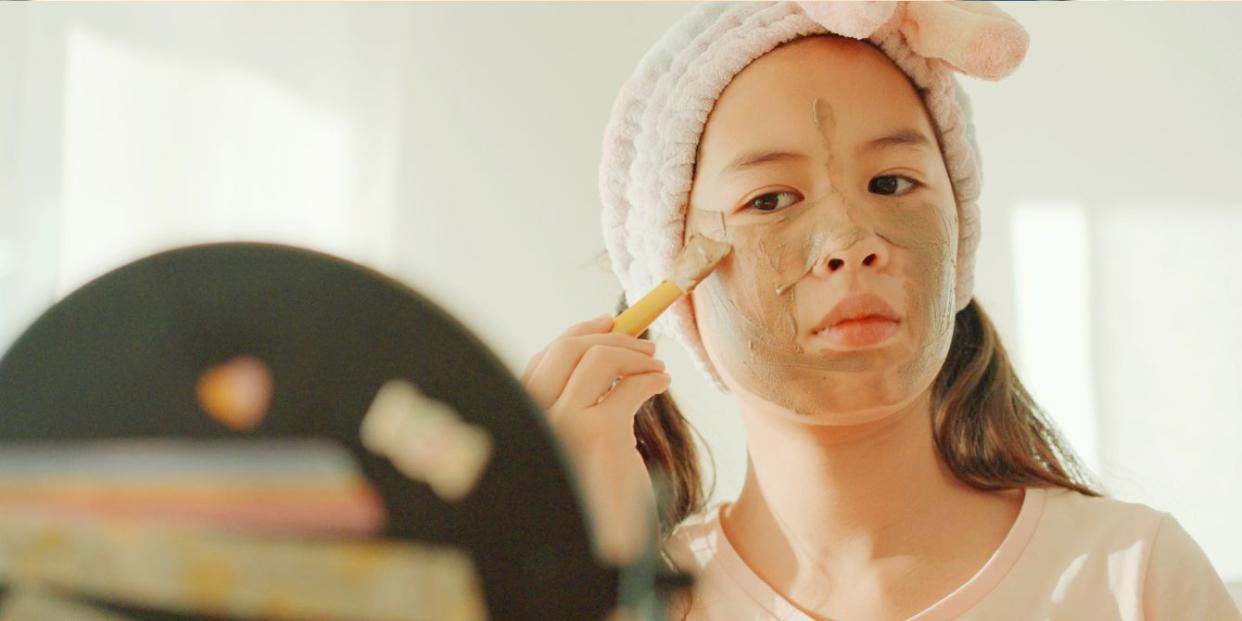‘Sephora kids’ and the concerning influence of social media on tween girls

For many mothers of today’s tweens, our coming-of-age looked a bit more…basic. At 10, we were the connoisseurs of Bonnie Bell lip gloss, Claire’s stores, Cucumber Melon-scented shower gel from Bath and Body Works and all things glitter. So today’s tweens’ search for premium skincare products at high-end cosmetic stores like Sephora might seem a bit extreme.
While we were fighting acne, they are navigating eight-step skincare routines with products that cost hundreds of dollars, and sharing about it on TikTok. Exactly what is the driving force behind this new “Sephora kids” trend and how do parents navigate the phenomenon amidst social media influencers and Insta pressure?
What’s the “Sephora kids” trend all about?
According to 2023 data by Greenlight, a company that works to provide resources and debit cards for raising financially-smart kids, children and teens are spending around $14.7 million at Sephora, a dollar amount that has more than doubled in the last two years. The data also shows that same group of consumers is spending $8 million at Ulta Beauty. One TikTokker laments about how every time she goes into Sephora now, she’s surrounded by “little girls.”
The spending itself calls for some parenting. “As we navigate this trend, there’s an opportunity for parents to weave financial literacy into conversations with their kids,” says Jennifer Seitz, Director of Education at Greenlight in Atlanta. “They can teach budgeting skills, help them understand the value of money, and ensure they spend responsibly before a pattern of impulse buys or overspending becomes the norm.”
And it’s not just the financial impact a trip to Sephora or Ulta Beauty might have for tweens. The pressure to look put together or keep up with the trends can impact young adolescents’ self-esteem.
“Social media amplifies the youth mental health crisis by bombarding teens with unrealistic beauty standards, and AI-generated filters exacerbate the issue by leading teens to a warped sense of beauty and maturity,” says Nicholette Leanza, a Licensed Professional Clinical Counselor for LifeStance Health. “Social media and the beauty industry often show idealized versions of women which influences young girls to want to look more mature and sophisticated.”
What parents of “Sephora kids” can do
When it comes to the financial aspect of this trend, Seitz has some pointers for parents.
Help your children find a balance between exploring their interests while also teaching healthy financial lessons—ones that reach beyond the doors of the beauty store.
Emphasize trade-off decisions by helping kids identify their wants vs. their needs.
Establish guidelines on how money is spent.
Educate your kids on what can happen if impulse purchases become the norm instead of the exception—for both you and them in the future.
“Growing up in today’s digital world often exposes kids and teens to more pressure from peers and society at large, where the desire to fit in or keep up with trends can be overwhelming,” says Seitz. “It’s important to engage in thoughtful conversations with children about the influence of social media hype on their spending decisions. Encourage them to reflect on their personal values, differentiating between lasting interests and transient trends.”
Leanza shares that same sentiment.
“Parents can help counteract negative social media and peer influence by praising their daughter’s character over her appearance as well as focusing more on inner growth and self-worth rather than likes and followers,” she says. “Encouraging girls to follow more body positive influencers and celebrities can also help cultivate a healthier self-esteem and body image and help dispel some of the negative messages social media and the beauty industry projects at girls.”
For Iva Pawling, president of Hello Franki, a clothing retailer for tweens, parents affected by the “Sephora kids” trend must recognize that there are retailers they can trust that are working to meet the needs of tweens and doing so in a parent-approved fashion.
“We recognize there’s a gap in the market right now for tweens and we want to fill that with a fun place for a tween to call their own,” she says. “Our goal is to really have the voice of the tween be the essence of everything we do. We want to empower tween girls to be comfortable and confident in expressing themselves as they are.”
While the new trend might be overwhelming and new chartered territory for many parents, their ability to guide their daughter through it will be an important step in not only defining her spending habits but also her self-worth.
“For parents who are grappling with their daughter over emphasizing how she looks and being obsessed with makeup and skin care products, start by having conversations with her about what genuine and realistic beauty looks like inside and out,” reminds Leanza. “Help her to understand that she’s so much more than just her appearance, and that her appearance does not define her. These are important messages for every young girl to hear and internalize.”

